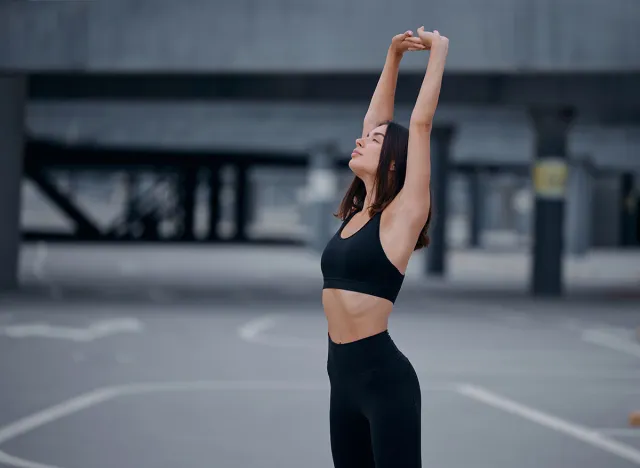Imagine a young boy in his favorite fitness clothes, lacing up his sneakers, ready to conquer his workout. That moment of bending over to stretch isn’t just about warming up—it’s the start of a journey toward strength, confidence, and health. This guide dives deep into how young athletes can prepare for fitness, from stretching routines to choosing the right gear, ensuring they’re set for success.
Why Preparation Matters for Young Athletes
Preparation is the foundation of any successful fitness journey, especially for young athletes. Proper warm-ups prevent injuries, boost performance, and build lifelong habits. For kids, starting with the right approach can spark a love for fitness that lasts.
The Science Behind Warming Up
Warming up increases blood flow to muscles, making them more flexible and less prone to strains. Studies show a 5–10-minute warm-up can reduce injury risk by up to 50%. For a young boy, this means more time playing and less time sidelined.
Building a Fitness Mindset Early
Mental preparation is as crucial as physical readiness. Teaching kids to set goals and visualize success fosters resilience. I remember my nephew, Jake, nervously preparing for his first soccer tryout—he practiced deep breathing to calm his nerves, and it worked wonders.
Essential Stretching Routines for Young Athletes
Stretching is the cornerstone of any warm-up. It primes muscles and joints, ensuring kids move safely and efficiently. Here’s how to structure a kid-friendly stretching routine.
Dynamic Stretching: Get Moving
Dynamic stretches involve active movements that mimic the workout ahead. They’re perfect for kids because they’re fun and engaging. Think leg swings or arm circles to get the blood pumping.
- Leg Swings: Stand on one leg, swing the other back and forth for 10 reps per side.
- Arm Circles: Extend arms and make small circles, gradually increasing size for 30 seconds.
- High Knees: March in place, lifting knees high, for 20 seconds.
Static Stretching: Cool It Down
Static stretches, held for 15–30 seconds, are best post-workout to improve flexibility. They help muscles recover and reduce soreness. A young boy bending over to touch his toes is a classic example.
- Hamstring Stretch: Sit with one leg extended, reach for toes, hold for 20 seconds.
- Quad Stretch: Stand, pull one foot to glutes, hold for 15 seconds per side.
- Shoulder Stretch: Cross one arm over the body, hold with the other arm for 20 seconds.
Common Stretching Mistakes to Avoid
Kids often rush through stretches or use improper form, which can do more harm than good. Ensure they stretch slowly and avoid bouncing. I once saw a young teammate pull a muscle by skipping his warm-up—lesson learned the hard way.
Choosing the Right Fitness Gear for Kids
The right gear can make or break a young athlete’s experience. From shoes to clothing, every piece matters for comfort and performance. Here’s what to look for.
Best Shoes for Young Athletes
Shoes need to provide support and cushioning tailored to the activity. Running shoes differ from soccer cleats, for example. A good pair can prevent blisters and injuries.
| Activity | Recommended Shoe Type | Key Features |
|---|---|---|
| Running | Lightweight Running Shoes | Cushioning, breathable mesh |
| Soccer | Cleats | Traction, ankle support |
| Basketball | High-Top Sneakers | Grip, shock absorption |
Fitness Clothing: Comfort Meets Function
Kids need breathable, flexible clothing that allows free movement. Moisture-wicking fabrics keep them dry during intense sessions. My cousin’s son, Liam, loves his bright blue workout shorts—they make him feel like a superhero.
- Tops: Opt for lightweight, sweat-wicking shirts.
- Bottoms: Choose stretchy shorts or leggings for mobility.
- Socks: Invest in cushioned, anti-slip socks to prevent blisters.
Where to Find Quality Gear
Top retailers like Nike and Adidas offer kid-specific fitness apparel. For budget options, check Target or Walmart. Local sporting goods stores often have sales on quality gear.
Nutrition Tips for Young Athletes
Fueling the body is critical for performance. Kids need balanced meals to support growth and energy demands. A well-timed snack can make all the difference.
Pre-Workout Snacks
A light snack 30–60 minutes before exercise provides energy without weighing kids down. Think bananas or yogurt—easy to digest and nutrient-packed. Jake always grabs a peanut butter toast before practice.
- Banana with Almond Butter: Potassium and healthy fats for sustained energy.
- Greek Yogurt with Berries: Protein and antioxidants for muscle support.
- Whole-Grain Crackers: Quick carbs for a fast energy boost.
Hydration: The Unsung Hero
Kids often forget to drink water, but dehydration can sap energy and focus. Encourage sipping water before, during, and after workouts. A fun, reusable water bottle can make hydration exciting.
Post-Workout Recovery Meals
After exercise, a mix of protein and carbs helps muscles recover. A turkey sandwich or a smoothie with protein powder works well. I’ve seen kids bounce back faster with proper nutrition.
Mental Preparation: Building Confidence and Focus
Fitness isn’t just physical—it’s mental too. Helping kids develop a strong mindset sets them up for success in sports and life. Here’s how to nurture it.
Visualization Techniques
Encourage kids to picture themselves succeeding, like scoring a goal or finishing a race. This boosts confidence and reduces anxiety. Jake visualized his soccer moves, and it helped him shine at tryouts.
Setting Realistic Goals
Teach kids to set small, achievable goals, like running an extra lap or improving their stretch. Celebrate these wins to keep them motivated. Small victories build big dreams.
Dealing with Setbacks
Losing a game or missing a goal can sting. Teach kids to see setbacks as learning opportunities. I once comforted my niece after a tough race—she later used that loss to fuel her training.
Comparing Fitness Activities for Kids
Not all activities suit every child. Here’s a comparison to help parents and kids choose the right one.
| Activity | Benefits | Challenges |
|---|---|---|
| Soccer | Teamwork, cardio | Requires coordination |
| Running | Builds endurance, solo focus | Can feel repetitive |
| Martial Arts | Discipline, self-defense | Needs consistent practice |
Pros and Cons of Popular Activities
- Soccer
- Pros: Social, fun, improves agility.
- Cons: Risk of minor injuries, needs team commitment.
- Running
- Pros: Low-cost, improves stamina.
- Cons: High impact on joints, less engaging for some.
- Martial Arts
- Pros: Builds focus, boosts confidence.
- Cons: Can be expensive, requires discipline.
People Also Ask (PAA) Section
What is the best warm-up for kids before sports?
A mix of dynamic stretches and light cardio, like jogging or jumping jacks, works best. It prepares muscles and joints while keeping kids engaged. Aim for 5–10 minutes to get them ready.
Where can I buy affordable fitness gear for kids?
Retailers like Target, Walmart, and Amazon offer budget-friendly options. Look for sales or clearance sections at Dick’s Sporting Goods for quality deals.
How can kids stay motivated to exercise?
Set fun goals, vary activities, and celebrate small wins. Joining a team or exercising with friends can keep kids excited. A reward system, like earning a new water bottle, helps too.
What are the benefits of stretching for young athletes?
Stretching improves flexibility, reduces injury risk, and aids recovery. It also teaches kids body awareness, helping them move better. Regular stretching can boost long-term athletic performance.
Best Tools and Resources for Young Athletes
Investing in the right tools can elevate a young athlete’s game. Here are some top picks for gear and resources to support their journey.
Top Fitness Apps for Kids
Apps make fitness fun and trackable. GoNoodle offers movement-based games, while Fitbit Kids tracks activity levels.
Training Aids
- Resistance Bands: Lightweight and great for strength training.
- Cones: Perfect for agility drills at home.
- Jump Rope: Affordable way to boost cardio and coordination.
Online Resources
Websites like KidsHealth provide tips on nutrition and exercise. YouTube channels like Cosmic Kids Yoga offer fun, guided workouts for kids.
FAQ Section
How long should a young athlete warm up?
A 5–10-minute warm-up is ideal, combining dynamic stretches and light cardio. This prepares muscles without causing fatigue. Adjust based on the activity’s intensity.
What’s the best age to start fitness training?
Kids can start light activities like running or stretching as early as age 5. Structured training is better around 7–8, when coordination improves. Always prioritize fun over pressure.
How do I know if my child’s shoes fit properly?
Ensure a thumb’s width of space at the toe and no slipping at the heel. Have kids walk or run in them to check comfort. Replace shoes every 6–12 months for growing feet.
Can kids lift weights safely?
Yes, with proper supervision and light weights, kids can start around age 10. Focus on form, not heavy loads, to avoid injury. Bodyweight exercises are a great starting point.
How much water should a young athlete drink?
Kids should drink 4–8 ounces of water every 15–20 minutes during exercise. A 12-ounce reusable bottle is a good target for a one-hour session. Adjust for heat or intensity.
Final Thoughts
Watching a young boy in fitness clothes bend over to stretch is more than just a moment—it’s the start of a healthy, active life. By focusing on proper warm-ups, quality gear, balanced nutrition, and a strong mindset, young athletes can thrive. Whether they’re chasing a soccer ball or mastering a martial arts move, preparation is key. Equip them with the tools and knowledge to succeed, and they’ll carry those lessons far beyond the field.





